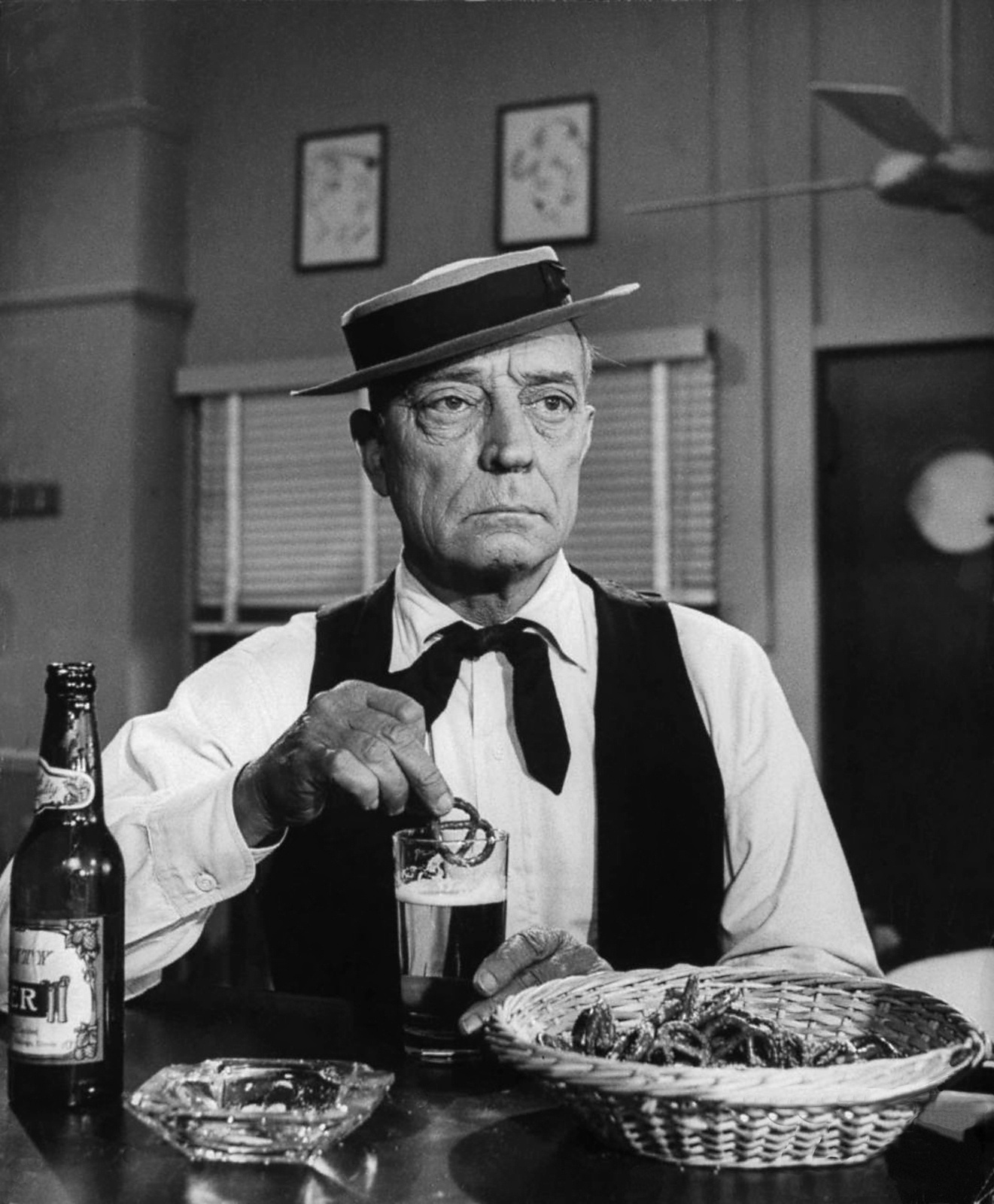

Keaton's fall down two stories after stepping out of the bathroom was one of the few times he injured himself badly. Keaton reused the gag of the side of a building falling on him, but emerging unscathed in the opening of a window in the wall, from the Fatty Arbuckle–Keaton film Back Stage he would reuse the same joke in The Blacksmith (1922) and Steamboat Bill, Jr. Keaton admires his build-it-yourself house The train collision was filmed at the Inglewood train station. The house was constructed on a turntable so that it could spin around during the storm scene. Many special effects, such as the house spinning around during a storm and the train collision, were filmed as they occurred and were not model work. Joe Roberts has a brief bit as a strong-man piano mover. The mischievous rival ("Handy Hank") is an unknown actor. Sybil Seely plays the young bride in her film debut. However, the idea of combining the films never came to fruition. Virginia Fox, who had been hired for the latter film, was replaced with Sybil Seely who had starred in One Week. Īccording to Eleanor Keaton, Buster originally thought to combine two of his two-reel films, One Week and The Boat (1921), into a four-reeler charting a young couple's adventures. Furthermore, the film lay the basis for the cinematic techniques of his future films: "The simple setups, the flat comedy lighting, the spare use of titles-and the overall excellence of the direction". and then that climax outmatched by the final sequence". According to Kevin Brownlow, One Week "set the style for all the future Keatons the opening gag sequence. Knopf notes that One Week is Keaton's first attempt to move away from a plot-driven narrative, as he employed in his earlier film The High Sign, toward mining more and more gags from a few basic elements-in this case, the house and ladders. Keaton reportedly joked that it was "one-third as scandalous". Years later, Keaton told an interviewer that the film's title is a play on Three Weeks, a notorious 1907 sex novel by Elinor Glyn. Keaton used numerous elements seen in the film, including "the wedding, the Model T and the use of the pages from a daily calendar to show the house being built in one week" in his comic parody. One Week was likely inspired by Home Made, an educational short film produced by the Ford Motor Company in 1919 to promote prefabricated housing. The groom stares at the scene, places a 'For Sale' sign with the heap (attaching the building instructions) and walks off with his bride.

As the couple look relieved, the house is immediately struck and demolished by another train coming the other way. The couple try to move it out the way of an oncoming train, which eventually passes on the neighboring track. They manage to move it on rollers but it stalls on railroad tracks. The couple find they have built the house on the wrong lot and must move it. During a housewarming party on Friday the 13th, a storm spins the house and its occupants around like a merry-go-round. A rejected suitor secretly renumbers packing crates, and the result is a lopsided structure with revolving walls, kitchen fixtures on the exterior, and upper-floor doors that open onto thin air.
#Buster keaton movies directed how to
The instructions describe how to construct the house by assembling materials in numbered packing crates. The story involves a newlywed couple who receive a kit house as a wedding gift.
#Buster keaton movies directed full
Plot Full video of One Week Buster Keaton One Week title card In 2008, One Week was selected for preservation in the United States National Film Registry by the Library of Congress as being "culturally, historically, or aesthetically significant".

The film contains a large number of innovative visual gags largely pertaining to either the house or to ladders. The film was written and directed by Keaton and Edward F. One Week is a 1920 American two-reel silent comedy film starring Buster Keaton, the first independent film production he released on his own.


 0 kommentar(er)
0 kommentar(er)
